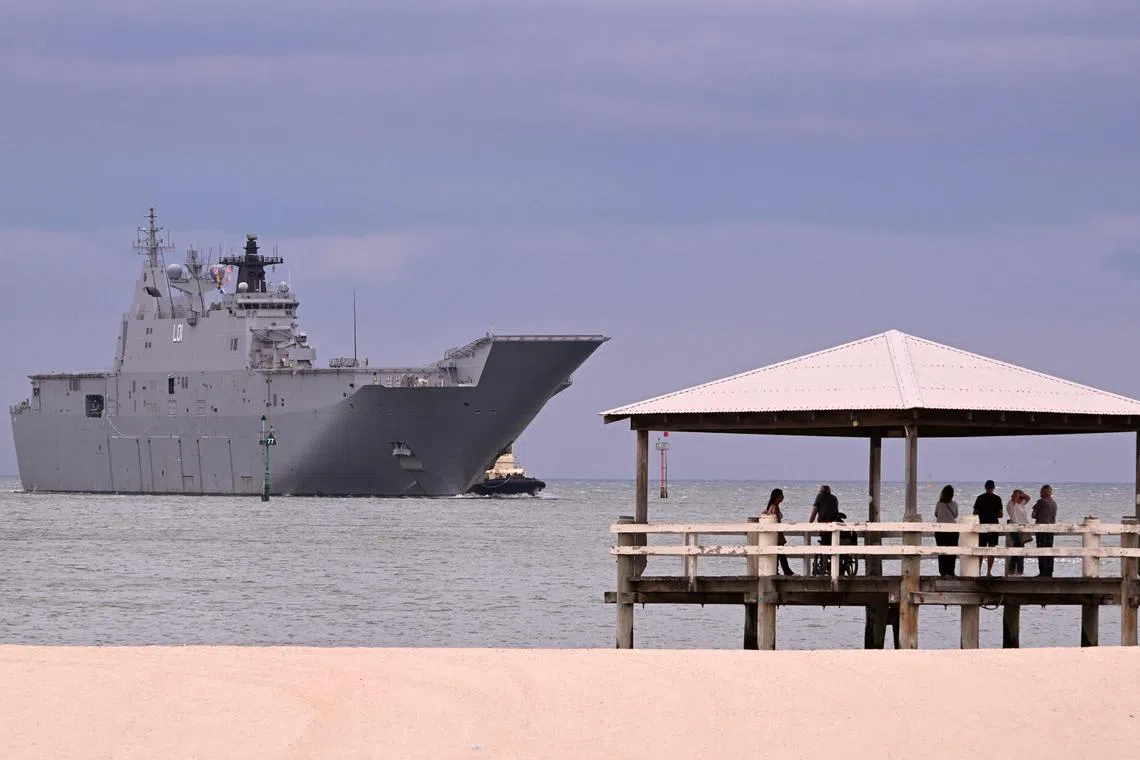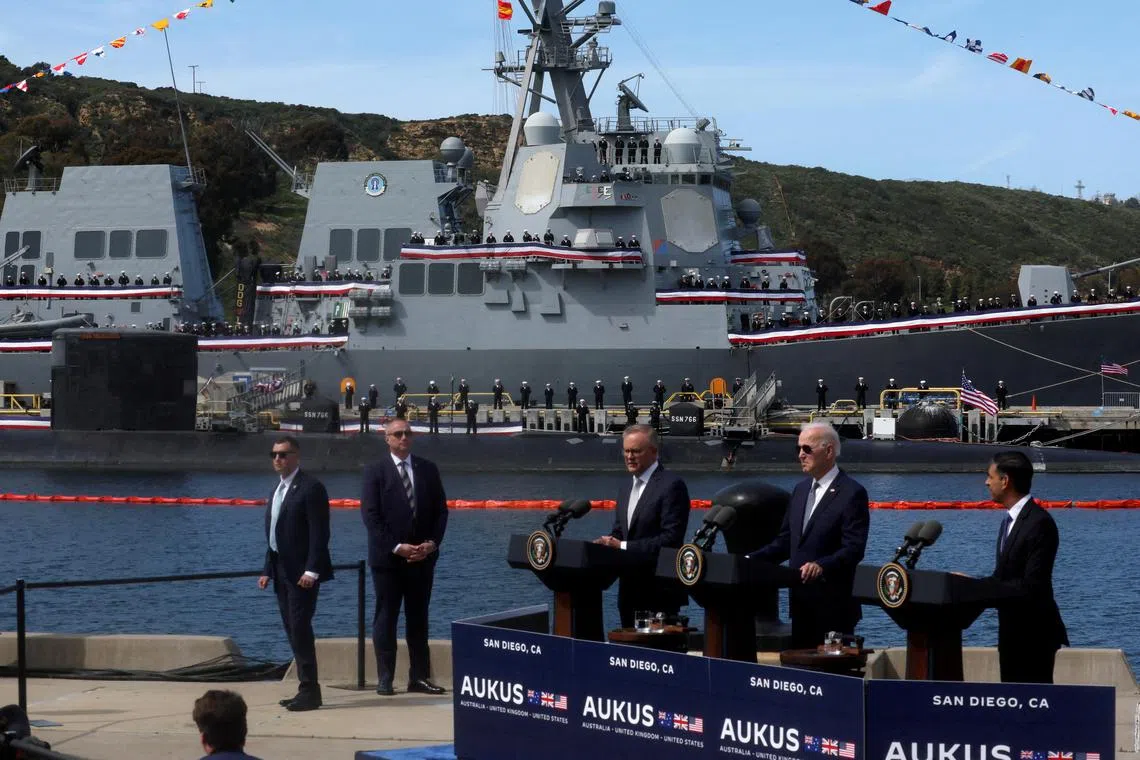News analysis
Australia’s defence spending hits record high, but deterrence might falter amid regional risks
Sign up now: Get insights on Asia's fast-moving developments

The latest 2024-25 federal budget revealed plans to dramatically escalate spending on defence to A$765 billion (S$686 billion) over the next decade.
PHOTO: AFP
Follow topic:
SYDNEY – Australia is ramping up defence spending to record levels to shield itself amid regional instability, but questions have emerged about whether its funding plans match its lofty military ambitions.
The latest 2024-2025 federal budget, released by the ruling Labor Party on May 14, revealed plans to dramatically escalate spending on defence to A$765 billion (S$686 billion) over the decade to 2033-2034.
Spending in the coming year is set to be about A$55.7 billion – or 2.02 per cent of gross domestic product. This is up from about A$53.3 billion this financial year.
Announcing its funding plans on May 14, the government said – rather vaguely – that it wants to achieve a “more capable and self-reliant Defence Force that can safeguard Australia’s security into the future”.
But an 80-page Defence Strategic Review, which was released by the government in April and outlined the need for funding increases, provided a much clearer sense of the source of Australia’s anxieties.
The document said competition between the US and China in the Asia-Pacific was increasing and that Beijing was willing to use “coercive tactics” to achieve its goals and tilt the regional balance in its favour.
“While conflict in the Indo-Pacific is not inevitable, Australia faces its most complex and challenging strategic environment since the Second World War,” the review said.
This gloomy outlook explains why Australia believes it must boost defence spending and is embarking on the most expensive military project in its history: A A$368 billion plan to acquire nuclear-powered submarines through its three-way security pact
However, the budget papers released on May 14 have raised doubts about whether Australia will actually achieve its spending plans, especially as the bulk of the funding increases has been pushed back well past the current four-year Australian budget cycle.
The budget is due to increase by A$7.6 billion in the three years to 2027 and to then rise by A$6.4 billion in the following 12 months to 2028. After 2028, the government plans to further lift defence spending by about A$35 billion over the five years from 2028 to 2033.
Of course, Labor faces an election in early 2025 and there is no guarantee that it will still be in power when most of these increases are due to be delivered.
This spending timetable has raised serious concerns about how and whether the government will be able to afford its major acquisitions, including eight nuclear-powered submarines, a new fleet of Hunter-class frigates, new armoured vehicles, and the remaining nine of a proposed 72-strong fleet of F-35 fighter jets.
Dr Malcolm Davis, an analyst at the Australian Strategic Policy Institute, observed that the government will actually come under growing pressure to reduce defence spending in the coming years, given that it expects growing deficits and sustained inflation.
“This is a budget that delays any significant increase in defence spending... despite intensifying strategic and geopolitical risk,” he wrote on the institute’s The Strategist website.

US President Joe Biden, Australian Prime Minister Anthony Albanese and British Prime Minister Rishi Sunak delivering remarks on the Australia, UK and US partnership, after a trilateral meeting at Naval Base Point Loma in San Diego, California.
PHOTO: REUTERS
“In effect, the government is betting big on nothing bad happening until the early-to-mid 2030s, in spite of all the strategic risk indicators flashing bright red.”
Sounding a similar warning, the foreign editor of The Australian newspaper, Mr Greg Sheridan, said the government had failed to make significant spending increases even though it has “a budget surplus, the brand-new shiny political object of Aukus, a consensus that these are threatening strategic times, and all the presumed energy of a first-term government”.
The other growing concern about the government’s budget plans is that its commitment to acquiring new submarines and frigates for the navy has come at the expense of the army and air force.
Mr Michael Shoebridge, a former senior defence official and director of defence and security think-tank Strategic Analysis Australia, told The Straits Times that the government was developing “an overly weighted force around two particular platforms – the Hunter frigates and the Aukus submarines”.
He said these capabilities would not start coming into force for 10 to 15 years, meaning that Australia’s relative strength will weaken over the coming decade.
“This budget tells me that Australia is hoping deterrence will work and that conflict won’t happen,” he said. “But deterrence works only if you have credible capabilities.”
Despite these mounting concerns about Australia’s spending commitments, the government’s defence plans received only meagre coverage during the discussion of the budget.
Much of the focus, instead, was on whether the latest budget risks adding to inflation.
Given that the government is pushing its defence spending problems to the distant future, it is hardly surprising that the public, too, is focused on more immediate hip-pocket concerns.


